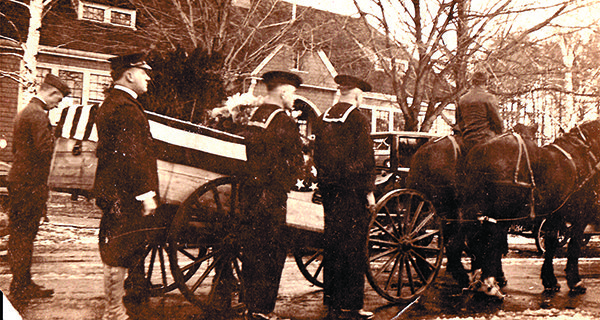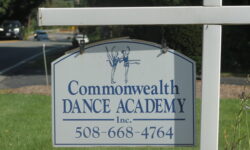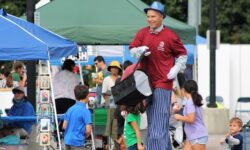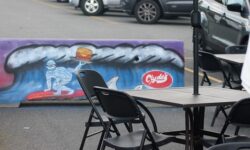By James Kinneen
Hometown Weekly Reporter
As COVID recedes, Hometown Weekly is taking a special look at how some of the businesses in its communities are transitioning back to post-pandemic circumstances.
Last September we reached out to some funeral home owners and workers to see how they were dealing with COVID restrictions, how people were grieving at a time when being in close contact with others was considered both taboo and dangerous, and the changes they thought it would bring to the funeral industry.
Reaching back out to Bob Folsom of Folsom Funeral Service, Tom Caruso of Roberts-Mitchell-Caruso Funeral Home and Jim Delaney of James H. Delaney and Son Funeral Home, we wanted to see what funerals looked like nearly a year later, what changes will stick around post-COVID and what their longest lasting memory of the COVID era working in funeral homes would be.
Right now, there are no restrictions on how many people can attend a funeral. However, Folsom noted some of the churches have their own restrictions in place. He also noted most cemeteries are restriction-free.
But if you think the restrictions guidelines were relatively easy to follow, you’d be incorrect. Jim Delaney explained that over the course of less than a year, restrictions went from a set ten people at a time (set meaning these ten are the ten, so if someone leaves they cannot be replaced), to forty percent capacity of the building on a rolling basis (if a person leaves they can be replaced by someone else). Then in the winter, Massachusetts had a spike in cases and saw capacity cut from forty to twenty-five percent, until late winter, when they returned to forty percent. Recently, all restrictions were lifted.
As for masks, the general rule is that these days, funeral directors ask the family of the deceased if they would like it known they want masks to be put in place. Delaney takes that idea a bit further, as they had bought ropes to encourage distancing during the pandemic. They now ask the family if they’d like those ropes to remain.
“During the limited capacity times, we had purchased some stanchions and ropes that kind of helped guide you through the funeral home, but also put the family they were greeting on one side and their guests on the other side of the room, which cut down on any type of physical contact, maintained the social distancing and wasn’t as awkward as just walking into a room and trying to maintain social distancing without any type of guidance. Now, we ask each individual family what their preference is.”
But while businesses may be allowed to have one hundred percent capacity, that doesn’t mean enough people will feel comfortable enough to fill the venue. Folsom noted he sensed some hesitancy, although that is increasingly waning.
“I get the sense they like not having to worry about whether to invite people or not,” he explained, “but there are still smaller groups of people coming in, in general, because some people are still nervous about going out into a crowd. But we are starting to see the number of people building, when we have services.”
Delaney agreed. “There is absolutely some reluctancy to come to funerals," he noted, "and we’ve seen that throughout COVID. Since the beginning, there were people who are uncomfortable being in a large public setting with a whole bunch of people around them. That’s fine. What we encourage those people who aren't attending is to leave condolence messages on the website, or to view the tribute video on the website so they can at least still be a part of what’s going on.”
But while necessity may be the mother of invention, Tom Caruso didn’t have any desire to see the changes COVID brought about to the industry. When asked if there was any change that worked during the pandemic that he might look to keep in place once COVID is gone, he declared: “Everything during COVID really never worked well. With everything, it was more of a hurdle - the six feet distancing and the number of people, those are all kind of restrictions and hindered the normal way of how a service would work inside the funeral home, and outside as well.”
He explained that the job is much easier now, since he doesn’t have to keep a count of how many people have entered and left to maintain the capacity limits, and doesn't have to stop people from entering until someone else has left.
Delaney had a different issue. While you might think streaming funeral services would be easy enough, families kept running into an unforeseen issue: music licensing. Yes, Delaney has a license to play copyrighted music in the funeral home, but when a family tried to livestream the services over something like Facebook Live, as soon as a song was played, Facebook would cut the feed and sometimes wouldn’t let it come back again.
While everyone is happy to get back to normal, looking back on COVID in general, Folsom noted: “We’re just glad to help people throughout and continue to keep people safe and healthy, playing our little part.”
“In general, funeral service did a decent job trying to bridge all gaps that were in place," Delaney added, "and just trying to take care of families as best as we could. It wasn’t perfect, but for what we had, it was the best we could do.”
While it was the best they could do, when pressed on what he will remember most looking back on the COVID era, and what it was like to work in a funeral home during the pandemic, Delaney’s answer was quick and concise.
“In the very beginning, the hurt that families had because they weren’t able to have services. It was horrible to explain to a family that because of the regulations and policies that were put into place, that we can’t have a traditional wake or that we can’t go to church - even though, say someone was a devout Catholic and we couldn’t take them to church for a funeral Mass. It was unbelievably hard to explain to a family where that’s all they want, and they’re saying it’s all their father would have wanted was to have a funeral Mass. To not do that was very hard, and it was very hard on the families.”























